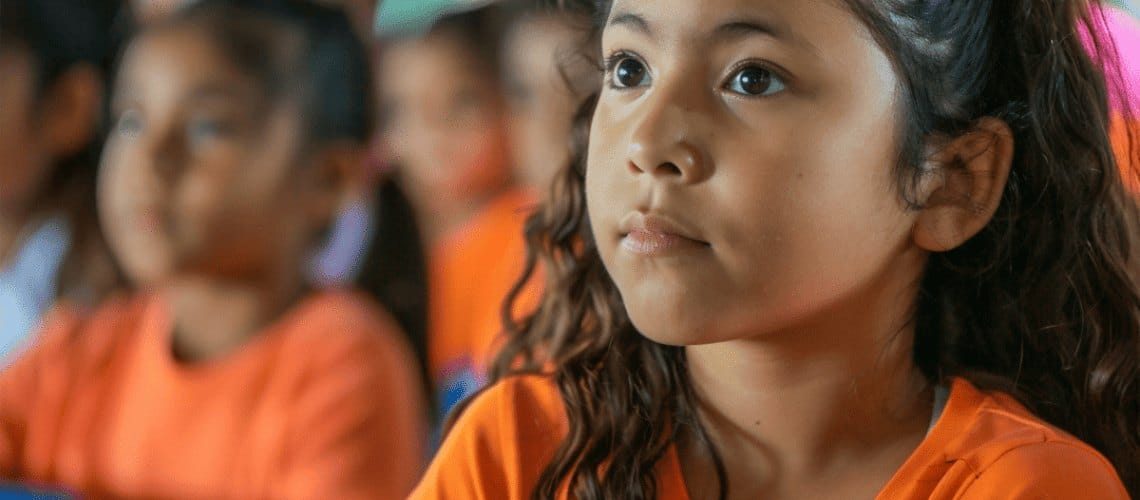Canada’s National Day for Truth & Reconciliation was established on September 30, 2021 and coincides with Orange Shirt Day. This day serves to memorialize the tragic history of the residential school system and the echoing impacts today. On September 30th, Canadians honour those who have felt the trauma of residential schools – the children who never came home, the survivors, their families, and their communities.
The Residential School System of Canada
Today, schools are a place of learning and conversation. We feel safe sending our children to school for the day, and are equally confident in the knowledge that they will come home each evening. However, this was not the case in Canada’s residential schools. The Canadian government and Christian churches designed these schools to strip away the history, traditions, culture, and languages from Indigenous children. They were often overcrowded and underfunded. Children were subject to a large amount of violence, including physical and sexual abuse. The teachers had no accountability for how they treated the children in their care.
It is estimated that 150,000 Indigenous children attended residential schools. Currently, it is estimated that 4,000 – 6,000 Indigenous children died at residential schools, but this number is inconclusive. Due to poor record keeping within the schools, it is likely we will never know the exact numbers.
Historical Timeline[i]
- 1831 – The first residential school opened in Brantford, Ontario. Its precursors were the ‘Mission Schools’ run by religious orders for Indigenous children. These operated for more than two hundred years from the early 1600s through to the 1800s.
- 1857 – The Gradual Civilization Act passed, requiring that all male Status Indians and Métis over 21 years of age must read, write, and speak in English or French. Additionally, forcing them to choose a government-approved surname.
- 1867 – The Constitution Act (British North America Act) passed, creating the Dominion of Canada. Under this act, the Federal government gives themselves authority over First Nations and their reserved land (reserves).
- 1876 – The Indian Act passed, intending to remove all Indigenous culture, and forcing assimilation into the Euro-Canadian society.
- 1883 – The first Prime Minister of Canada, Sir John A. Macdonald, authorized the creation of residential schools in the West. He said, “In order to educate the children properly we must separate them from their families. Some people may say this is hard, but if we want to civilize them we must do that”.
- 1951 – Amendments made to the Indian Act, allow provinces jurisdiction over child welfare on reserves. This began the “Sixties Scoop”, in which more than 20,000 Indigenous children were taken from their homes. These children were adopted or placed in foster care, in largely non-Indigenous households; some even being placed outside of Canada.
- 1996 – The last residential school closed.
Altogether, this amounts to 165 years of suffering within residential schools – that is close to 400 years if you consider the original mission schools – and this does not even begin to account for the pain and trauma that remains throughout Indigenous communities.
What is Orange Shirt Day?
Orange Shirt Society (OSS) is a long-standing organization in Canada, who remind us that this act of honouring and reconciling must be an ongoing part of our lives. If you have spent time in Canada, it is likely you have heard their message, “Every Child Matters – every day and everywhere”. Consequently, through the tradition of Orange Shirt Day, the colour orange has become a representation of healing.
Wondering why OSS is based around an orange shirt? Learn more by reading Phyllis Webstad’s story, as the organization’s founder and a survivor of the residential school system.
Canada observes Orange Shirt Day, or National Day for Truth and Reconciliation, annually on September 30th. British Columbia, Manitoba, Northwest Territories, Prince Edward Island, the Yukon, and the federal jurisdiction have deemed this a statutory holiday.
Your Part in Reconciliation
OSS breaks it down into four easy steps – Learn, Advocate, Participate, and Give. The first, and most daunting, step for many Canadians is to face the traumatic history of this country. It is not enough to simply have awareness that residential schools existed or to put on an orange shirt one day of the year. As a nation, we must gain a more in-depth understanding of what truly happened in residential schools, what impacts were felt then, and what impacts continue to be felt in the present day.
Below is a list of a few resources where you can begin (or continue) your learning journey:
- Resources – Orange Shirt Society (orangeshirtday.org)
- Residential Schools | The Canadian Encyclopedia
- The History of Canada’s Residential School System — Galt Museum & Archives
- Residential School History – NCTR
- Reconciliation means taking action (chrc-ccdp.gc.ca)
- Learning resources about First Nations, Inuit and Métis across Canada (rcaanc-cirnac.gc.ca)
- Understanding the National Day for Truth and Reconciliation (rcaanc-cirnac.gc.ca)
[i] The historical timeline of residential schools came from two sources: (1) The Canadian Encyclopedia, Timeline Residential Schools, and (2) National Centre for Truth and Reconciliation, Residential School Timeline.


